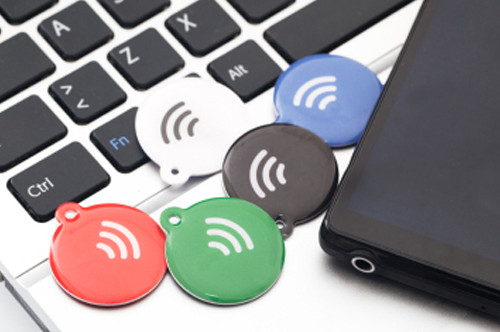Near Field Communications (NFC) has been inside mobile devices since 2006 (for the trivia buffs amongst you – the first device was Nokia’s 6131 NFC flip phone), but despite its growing inclusion in smartphones from Samsung, Nokia, Blackberry, Huawei, HTC and others, the technology retains a perception of under delivering on its promise. In some circles, NFC holds a reputation of unfulfilled potential typified by the sardonic tumblr site ‘Pictures of people using NFC on their smartphones’, a site conspicuously and intentionally devoid of pictures.
Assuming this perception holds some degree of truth, why hasn’t NFC taken over the world yet? Why have marketers and advertisers, usually the first to harness innovative engagement technologies, failed to capitalise on it? The elephant in the room and perhaps the biggest hindrance in NFC’s fight for ubiquity is Apple’s refusal to include the technology in iPhones and iPads.
There are likely reasons beyond technology preference driving this stance, but Apple’s NFC reluctance alone doesn’t explain it. The number of consumers packing NFC enabled devices in their pocket IS growing – analysts at IDC believe around 180 million non-Apple smartphones shipped in the first quarter of 2013. A large percentage of those have NFC on board. Revolutionary products like Google wallet, due to hit the UK later this year, are based around NFC. So what gives?
For marketers and advertisers, NFC presents a tantalising opportunity. It enables device-to-device or device-to-ANYTHING interaction based on nothing but ‘nearness’. Proximity of a few centimetres is all it takes for NFC enabled objects to interact, share and connect. Anyone who has blundered through a ‘does this number match the number on your device?’ or similarly cumbersome Bluetooth pairing instructions understands that Bluetooth is certainly not the ultimate evolution of device-to-device pairing and sharing. Most would happily trade that experience for a ‘touch and go’ experience.
For an advertiser, the window of piqued interest is often very small. With every passing millisecond a user engaging with an ad needs to pair, link or connect, their curiousity dies. NFC is one of the most exciting ways to bring instantaneous connection.
The infrastructure rollout is happening
The infrastructure rollout of NFC was slow to begin with, but it has been gathering pace. Encode-able NFC chips and stickers are cheap. Advertisers are beginning to understand how to harness NFC’s immediacy and simplicity. Credit cards and payment giants like Visa, MasterCard and PayPal have been building NFC capabilities into their infrastructure.
Consider everyday use cases for the growing number of consumers walking around with NFC enabled smartphones. Waiting for a bus. Riding the underground. Going to a football game.
NFC could allow someone waiting for a bus to simply tap the NFC enabled bus shelter ad to listen to exclusive music tracks on their phone while they wait. Samsung has already driven campaigns that do exactly this.
NFC could enable underground passengers, trapped without mobile and Internet signal, to sample a book by tapping their device on the NFC enabled placement on the carriage wall (an ingenious idea proposed by students in Miami – let’s hope we see it soon).
Right now, when you step inside a New York taxi you can not only pay your fare using Google Wallet’s NFC payment system, you can also use NFC to interact with promotional content on the cab’s in-car monitor.
Creative executions such as the NFC book sample are where mobile advertisers are now looking to leverage NFC – by building the initial interaction into an ongoing engagement.
The book publisher giving chapter samples away on the train should look to mobile advertising to help it do more than just deliver sample content via NFC. Brands and advertisers doing the best work with NFC are realising that the logical conclusion of an exchange such as the NFC book sample is an integrated mobile ad encouraging further action.
Connecting NFC and mobile advertising
‘Enjoy the sample? Download the rest of this book for $5.99’ may not be the most sophisticated call to action, but it has the advantage of context and immediacy. Consumers who’ve received a train ride’s worth of entertainment just for touching their phone to the wall are more likely than not to feel like they’re getting value for their investment.
Mobile ads that are effectively integrated into these NFC interactions arrive when the consumer is engaged and feeling positive about the value they’re receiving. Context and relevance is everything when it comes to mobile advertising.
A consumer using NFC to sample content is by definition quite unafraid of trying innovative things on mobile. This arguably places them in a group more likely to be open towards buying content or acting upon a relevant ad they see as part of the experience.
NFC’s emergence holds great promise not only for users wanting to share and engage, but for marketers too. When coupled with targeting mobile advertising, NFC brings a simple, powerful opportunity to engage users with targeted content and add value to the interaction, long after the initial tap.






